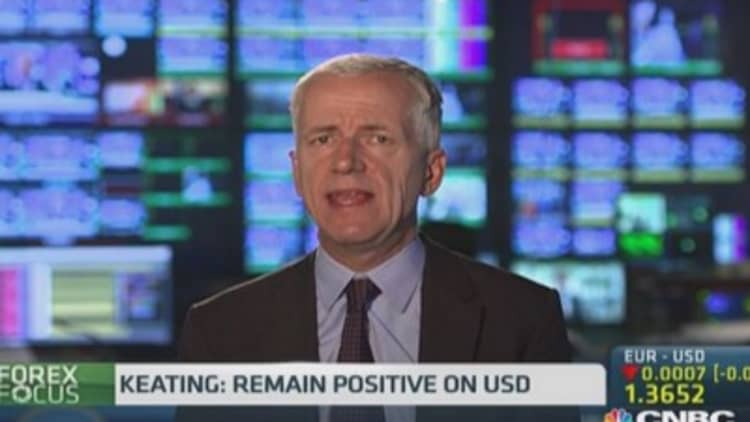The Australian dollar – which appeared to be on course for a return to parity with the U.S. dollar just days ago – is set to end the year below $0.90, say strategists.
Reserve Bank of Australia (RBA) governor Glenn Stevens is partially responsible. His comment Thursday that the Aussie is "overvalued, and not just by a few cents," sent the currency as low as $0.9329, down from $0.9439 earlier in the day. It edged up slightly to $0.9353 on Friday.
"The RBA is going to continue to jawbone the currency lower. If you've got a central bank talking down the currency, this is likely to discourage foreign investors from investing in Australian assets," David Forrester, currency strategist at Macquarie told CNBC. He sees the currency falling to $0.88 by year-end.
Read MoreAustralia RBA holds rates at record low, keeps steady view
Growing demand for Australia's high-yielding bonds has been a key driver of the currency's gains this year.
On top of a central bank that is talking down the currency, the Aussie could also come under pressure from higher U.S. bond yields later this year.
U.S. yields are currently being kept down by "unjustified pessimism" around the economy, which may slowly abate as we move into the third quarter, said David Woo, head of global rates and currencies research at Bank of America Merrill Lynch.

Stronger-than-expected employment data for June have raised hopes of a strengthening recovery in the world's largest economy. The U.S. economy added 288,000 jobs, after May's 224,000 increase.
Read MoreWhy Australia shares have stalled
"From that point of view, carry trades including the Australian dollar may become less attractive," he said. A carry trade is when investors borrow in a low-yielding currency, such as the yen and sometimes the U.S. dollar, to fund investments in higher.
Another headwind for the currency could stem from slowing capital inflows into the Australian economy.
"All the massive capital inflows, especially FDI (foreign direct investment), to finance the mining infrastructure is going to slow sharply in 2015 as some of these projects are nearing completion," Woo said.
Read MoreAustralia's outlook rife with uncertainty
On the topic of mining, Khoon Goh, senior FX Strategist at ANZ, who forecasts the Aussie will fall to $0.87 by year-end, adds that falling iron ore prices could be another factor that weighs on the currency.
The price of iron ore - Australia's largest export, which accounts for 19 percent of total exports - has tumbled around 30 percent so far this year due to worries about oversupply and slowing Chinese demand.


